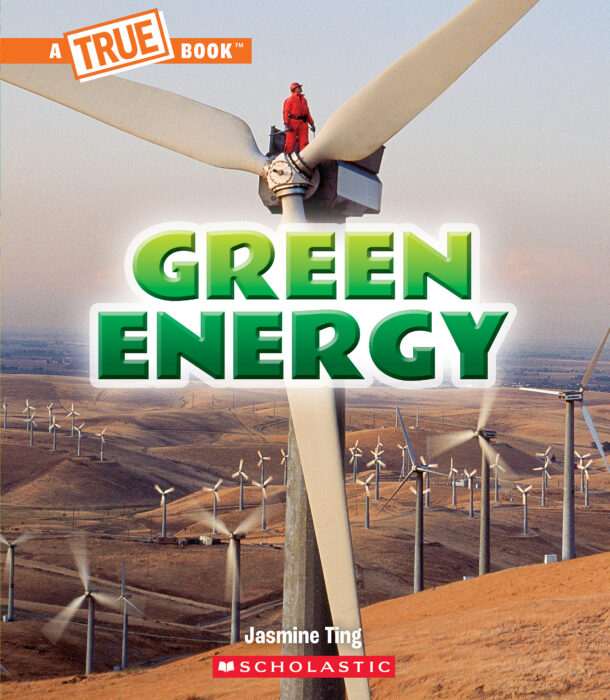
How will renewable energy be part of our future? These books explore different sources of renewable energy and how they are being used today and in the future. The possibilities are endless for energy-filled classroom discussions and activities!
Energy lab for kids: 40 exciting experiments to explore, create, harness, and unleash energy
by Emily Hawbacker
Do you want to know about the different types of energy and how they help us in our everyday lives? Potential, kinetic, chemical, radiant and thermal energy: they affect us daily. This book provides activities that explore the different components of energy: from what it is, to how it’s discovered and used, and how we can save it. If you like hands-on fun, this is the book for you!
Classroom Activity
How much energy do you use? Ask students to track their energy use for 24 hours. Have them write down the activity, type of energy used, time spent using energy, and where they used it. Using this information, have students answer the following questions:
- How many minutes of energy did you use in total?
- What activities used the most energy?
- What surprises you about your energy use?
- Why is it important to understand your energy use?
Have students brainstorm three ways they can conserve energy in their daily life. What changes will they have to make? How easy will it be to implement these changes?
The Boy Who Harnessed the Wind, Young Reader’s Edition
written by William Kamkwamba and Bryan Mealer, illustrated by Anna Hymas
An exciting memoir of a boy living in a drought-stricken village in Malawi, who builds a windmill from scrap, with the help of science books at the school library, and brings electricity to his home to pump water for crops.
Classroom Activity
After reading about William Kamkwamba’s windmill, students can harness their creativity to design and built wind-powered cars. A basic wind car design has a base, wheels, and a sail. Have students sketch a design for their wind car. Next, students can brainstorm easy-to-find materials they can use to build their cars. What will they use to build the base? The wheels? The sail? Have students gather the materials and attempt to build their design. What adjustments, if any, do they need to make to the initial design? Once the cars are built, test how well they capture wind power. Which designs perform the best? Why?

by Jasmine Ting
Have you ever considered the energy we use to power our lives? Our houses, our tablets, our handheld games and phones all require it. That won’t stop anytime soon. What scientists want to do is find sustainable energy that will lead us to a green future. This book explains what green energy is, the types of green energy available to us, and how each is put to work for us through technological innovations.
Classroom Activity
What types of renewable energy are being used in your community? Have students form small groups to research renewable energy use. How could renewable energy sources replace fossil fuels in the community? What types of renewable energy would be the easiest to implement? What types would be the most difficult? How and where would the renewable energy be used? Have each group prepare a presentation that highlights their renewable energy recommendations for the community.
*************************************
 Carla Mooney loves to explore the world around us and discover the details about how it works. An award-winning author of numerous nonfiction science books for kids and teens, she hopes to spark a healthy curiosity and love of science in today’s young people. She lives in Pennsylvania with her husband, three kids, and dog. Find her at http://www.carlamooney.com, on Facebook @carlamooneyauthor, or on Twitter @carlawrites.
Carla Mooney loves to explore the world around us and discover the details about how it works. An award-winning author of numerous nonfiction science books for kids and teens, she hopes to spark a healthy curiosity and love of science in today’s young people. She lives in Pennsylvania with her husband, three kids, and dog. Find her at http://www.carlamooney.com, on Facebook @carlamooneyauthor, or on Twitter @carlawrites.

















